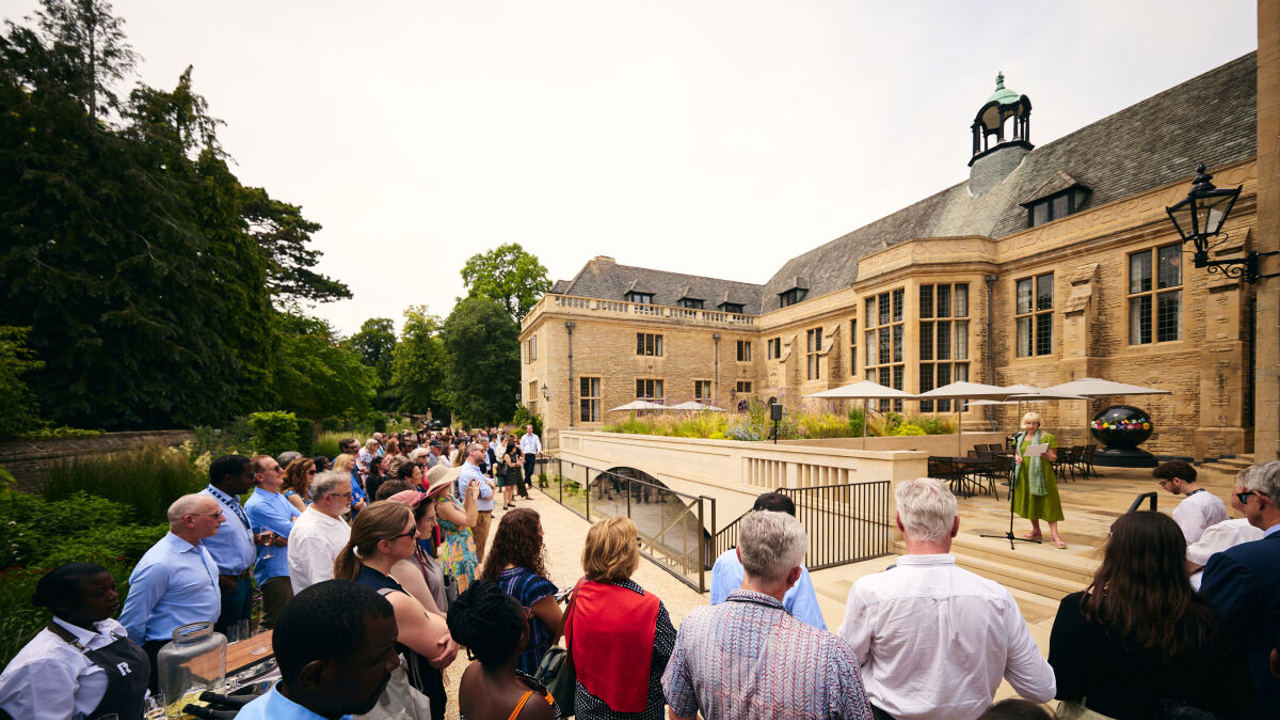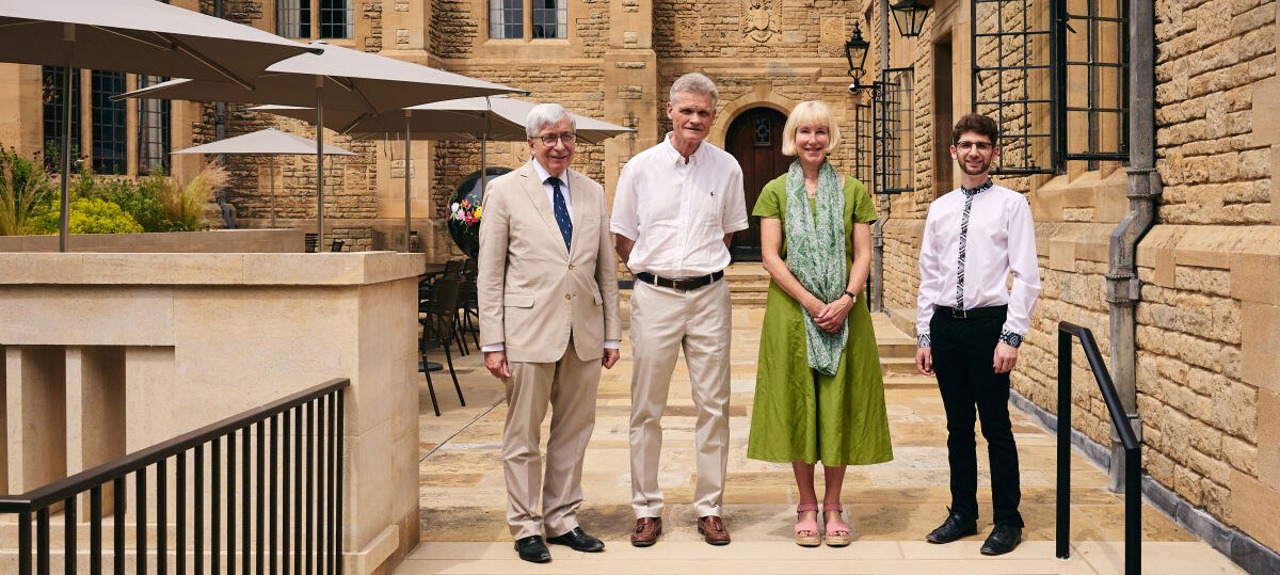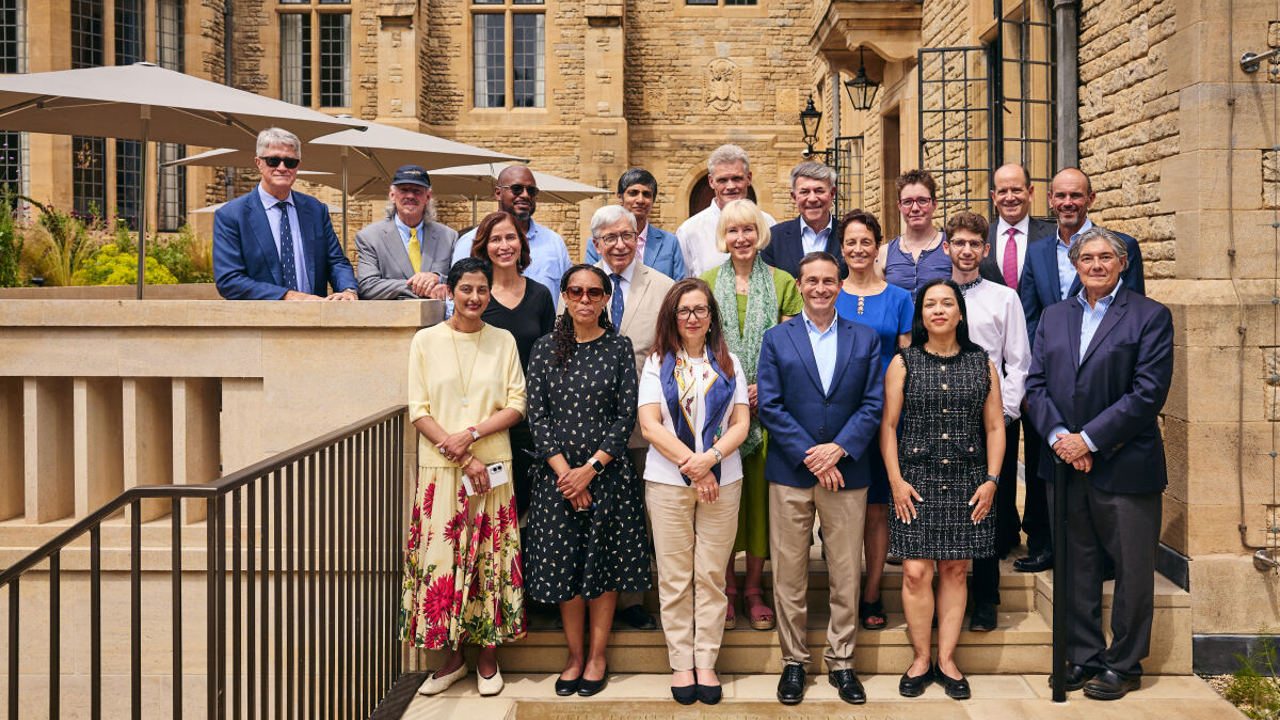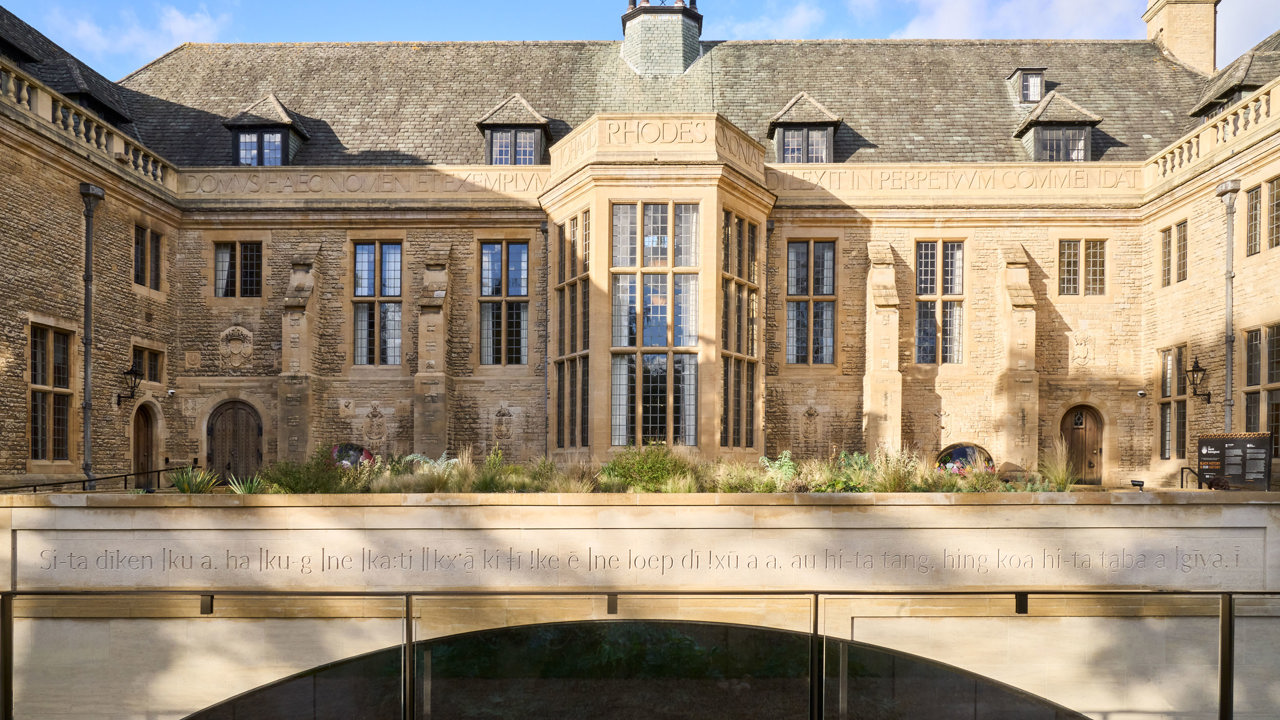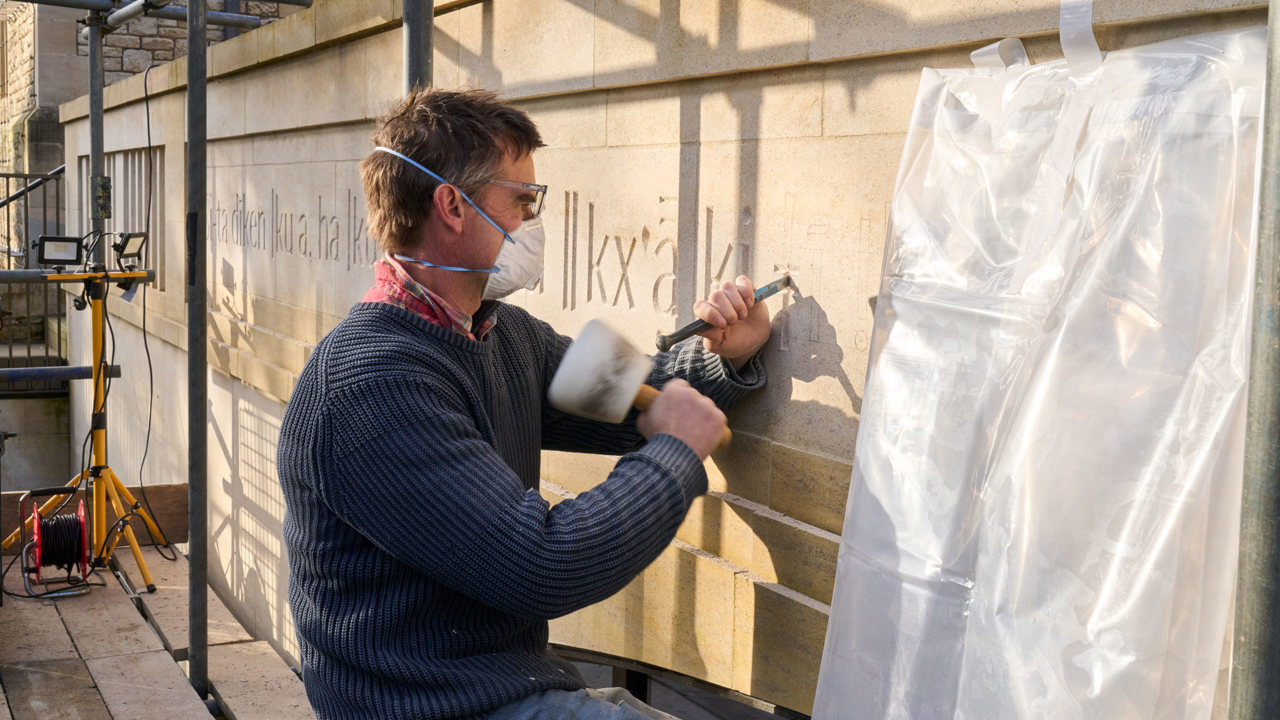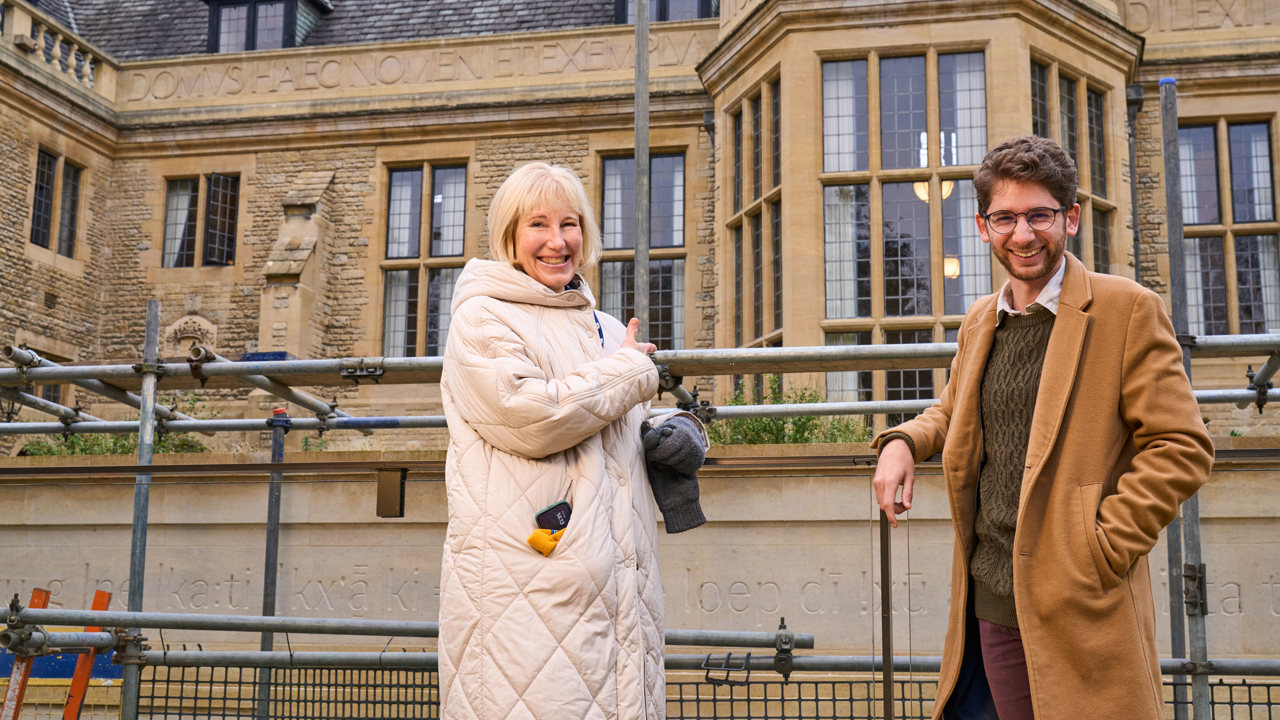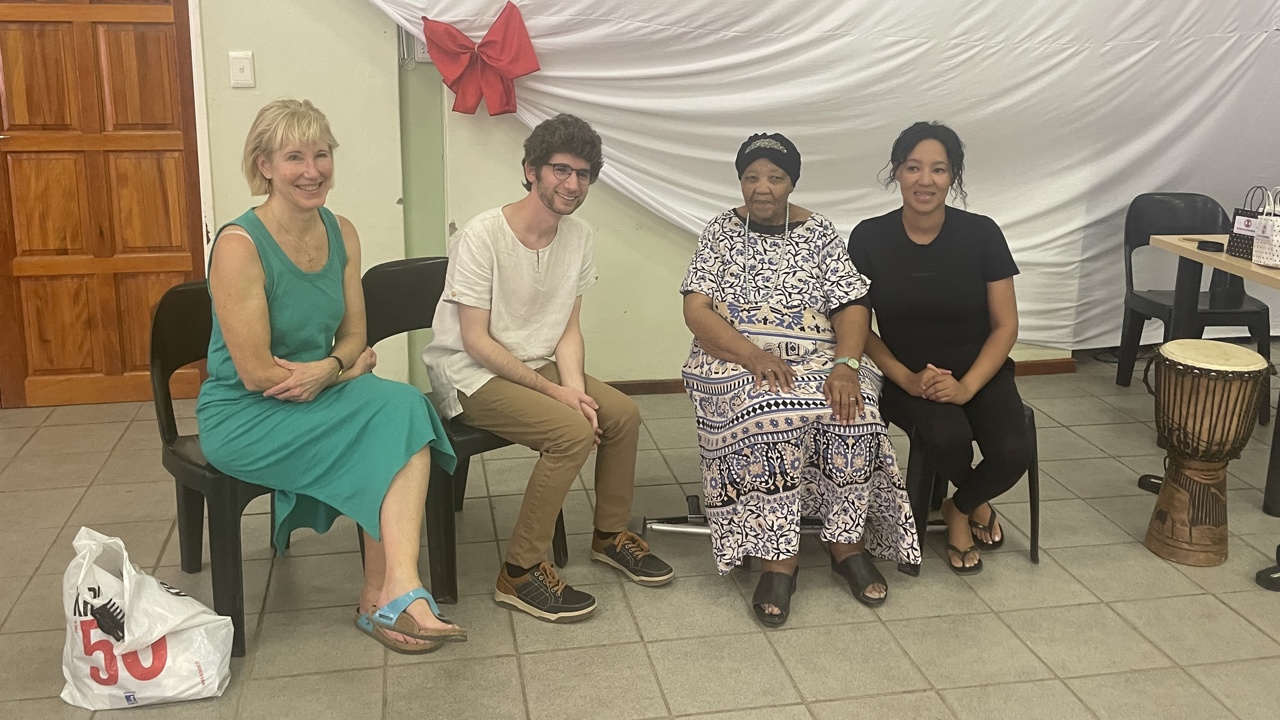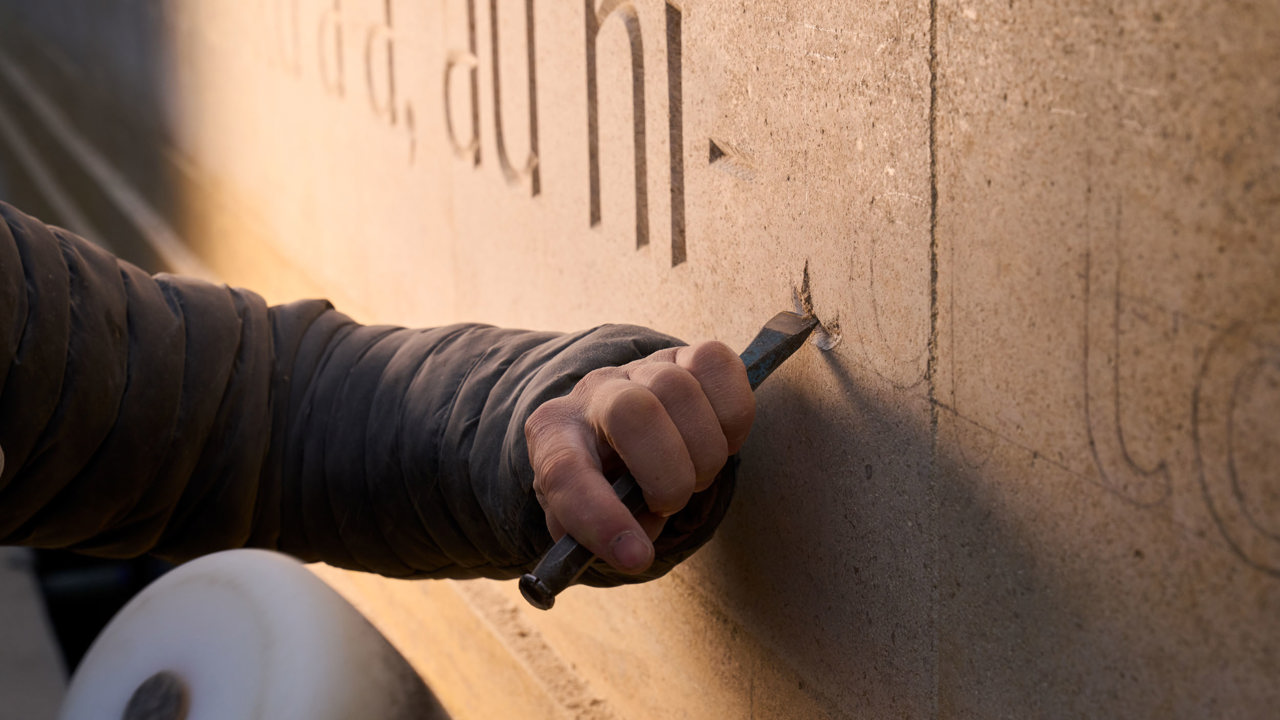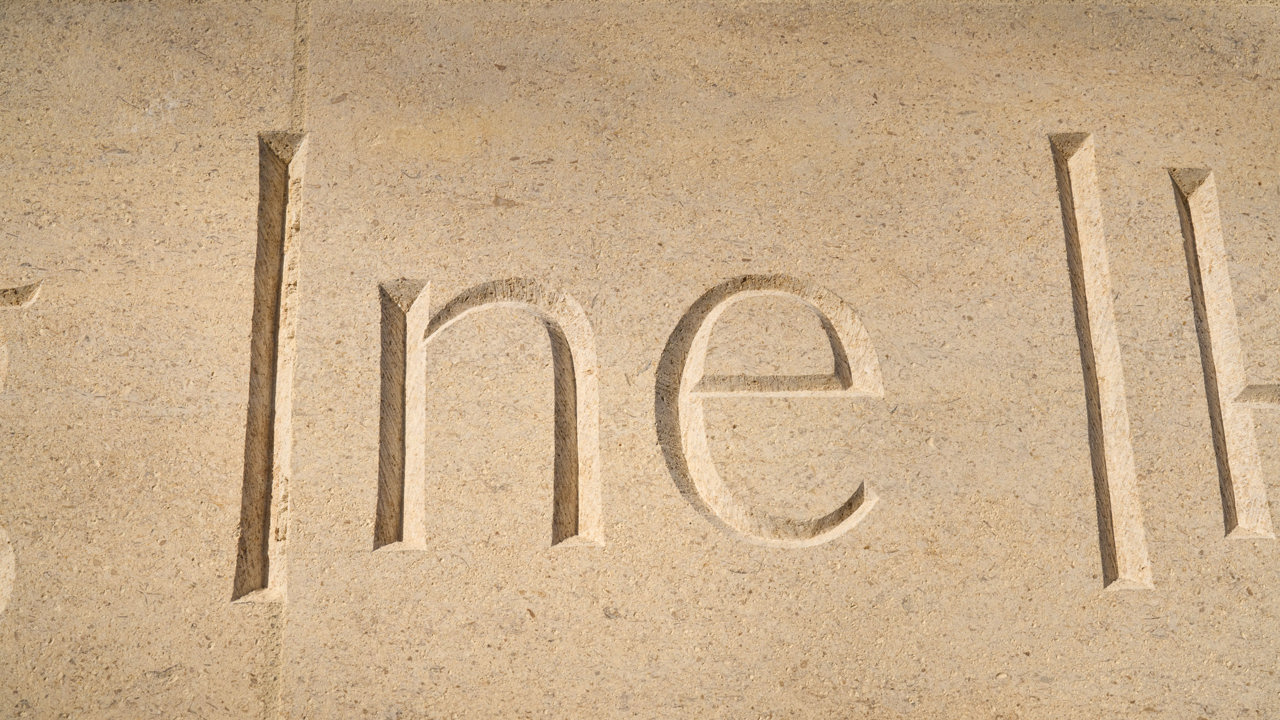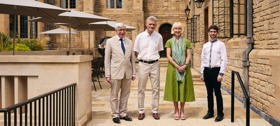Trustees, Scholars, National Secretaries, staff and special guests gathered in the Rhodes House gardens on 20 June 2025 to mark the dedication of a new parapet carving in |xam, a sleeping southern African language. The inscription acknowledges the source of the Rhodes Trust's wealth and a nearby translation stone gives its meaning as:
Remembering and honouring in our work those who suffered and laboured to generate this wealth
In his welcome remarks, the Interim Warden, Professor Sir Rick Trainor, spoke of the process of consultation with Legacy, Equity and Inclusion Advisory Groups which had identified this opportunity for acknowledgement. He thanked Dr Elizabeth Kiss, former Warden, for her leadership in opening and guiding those conversations, and in bringing the project to life.
The carving was carried out by local stonemason Fergus Wessel, who was brought into the project by Director of Estates, Mat Davies. It sits at eye level to those walking in the gardens of Rhodes House, and in sight of the Latin inscription on the House’s original parapet, which reads, "This house stands for ever as a reminder to the Oxford he loved of the name and example of Cecil John Rhodes."
Explaining the choice of language for the new carving, Trustee and Rhodes Scholar Professor Elleke Boehmer said that "although English is a global language, it is also a colonial language, and a language through which many cultures worldwide have felt excluded. Quite early on we decided on the southern African language ǀxam, for a number of reasons. |xam was the language spoken by those indigenous people who met the first Europeans to arrive at the Cape of Good Hope – later the focal point of so many of Rhodes’ political and economic activities. |xam is related to other click languages of southern Africa, especially the Northern Cape and Namibia. And |xam is also the language of the South African coat of arms."
Professor Boehmer explained how she had travelled to the Kalahari to consult with community leaders who are speakers of the related language N|uu about the use of |xam in this context, and had received encouragement for the project. Luan Staphorst, a linguist who was working on the phrasing in |xam had used this visit to consult on the details of the translation to be used.
She went on to note that "in crafting the wording, and the translation, the context of the carving was always present to us. The new inscription sits in dialogue with the original wording on the top of the house in Latin (also a sleeping language) about Rhodes. To make sure that there could be dialogue between the upper and the lower writing, we also decided that we would build in translation stones to make both accessible. Our strong hope is that this parapet acknowledgement in |xam will open conversations, as well as serving as a reminder to all who use this space of how it came about and the complications and challenges presented by our history."
Those gathered witnessed the formal dedication of the inscription by Professor Sir John Bell, Chairman of the Rhodes Trust Board, and had the special experience of witnessing the first public reading of the |xam wording, by linguist and lead translator Luan Staphorst.
Further reflections on the language and translation, written by Professor Elleke Boehmer and Luan Staphorst, have been published in an article in The Conversation.


